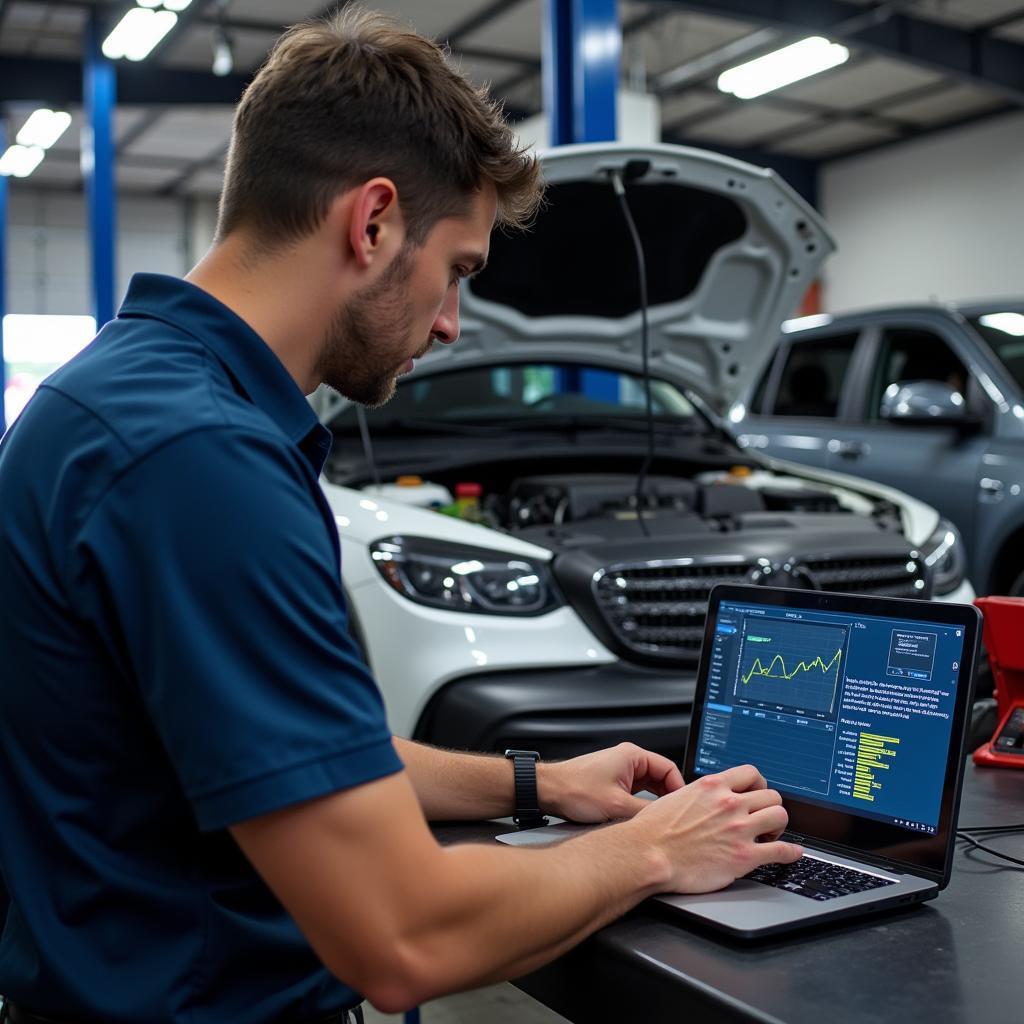Are you experiencing car trouble but dread the thought of an expensive trip to the mechanic? Home diagnostic tests for cars might be the solution you’ve been searching for. These handy tools have revolutionized car maintenance, empowering car owners to understand their vehicles better and potentially save money on unnecessary repairs.
 Assortment of Home Car Diagnostic Tools
Assortment of Home Car Diagnostic Tools
Understanding Car Diagnostic Tests
Before diving into home diagnostics, it’s crucial to grasp the basics. Car diagnostic tests analyze your vehicle’s computer system, retrieving data from various sensors to identify potential issues. Think of it as a health check-up for your car.
The Power of Home Diagnostic Tests
Home diagnostic tests, often utilizing an OBD-II scanner, offer several benefits:
- Early Problem Detection: Identifying minor issues early can prevent them from escalating into costly repairs down the line.
- Cost Savings: By pinpointing the problem area, you can avoid unnecessary diagnostic fees at the mechanic.
- Empowerment: Understanding the source of your car troubles puts you in a better position to make informed decisions about repairs.
Common Issues Detectable with Home Diagnostic Tests
Home diagnostic tests can effectively identify a range of car problems, including:
- Check Engine Light: Decipher the reason behind that pesky check engine light, whether it’s a loose gas cap or a more serious engine malfunction.
- Sensor Problems: Detect faulty sensors related to oxygen levels, airflow, or engine speed, which can impact your car’s performance and fuel efficiency.
- Battery and Charging System Issues: Identify problems with your battery, alternator, or starter motor.
- Transmission Issues: Detect potential issues with your car’s transmission system early on, potentially saving you from expensive repairs.
Choosing the Right Home Diagnostic Test for Your Car
Navigating the world of home diagnostic tests can feel overwhelming. Here’s what to consider:
- Type of Scanner: OBD-II scanners are the most common, but some advanced models offer additional features like live data streaming and ABS system diagnostics.
- Compatibility: Ensure the scanner you choose is compatible with your car’s make, model, and year.
- Features: Consider features like code definitions, data logging, and compatibility with smartphone apps for added convenience.
Performing a Home Diagnostic Test: A Step-by-Step Guide
- Locate your car’s OBD-II port. It’s usually located under the dashboard on the driver’s side.
- Plug in your OBD-II scanner. Turn on your car’s ignition (but don’t start the engine).
- Follow the on-screen prompts. The scanner will communicate with your car’s computer and retrieve any stored trouble codes.
- Interpret the codes. Most scanners provide basic code definitions, or you can search online databases for detailed explanations.
- Address the issue. Armed with the diagnostic information, you can attempt a DIY fix or consult with a mechanic, providing them with the specific codes for targeted repairs.
 Mechanic Reviewing Diagnostic Results on a Laptop
Mechanic Reviewing Diagnostic Results on a Laptop
Home Diagnostic Tests: Not a Replacement for Professional Expertise
While home diagnostic tests are invaluable tools, it’s essential to remember that they are not a complete substitute for professional mechanics. Complex issues may require specialized equipment and expertise. However, these tools provide a starting point, allowing you to gain a basic understanding of your car’s health and make informed decisions about seeking professional help.
Home Diagnostic Tests: Empowering Car Owners
Home diagnostic tests for cars have emerged as essential tools for car owners, providing a convenient, cost-effective, and empowering way to approach car maintenance. By understanding how to utilize these tools effectively, car owners can take control of their car’s health, potentially saving time and money in the long run.

Leave a Reply